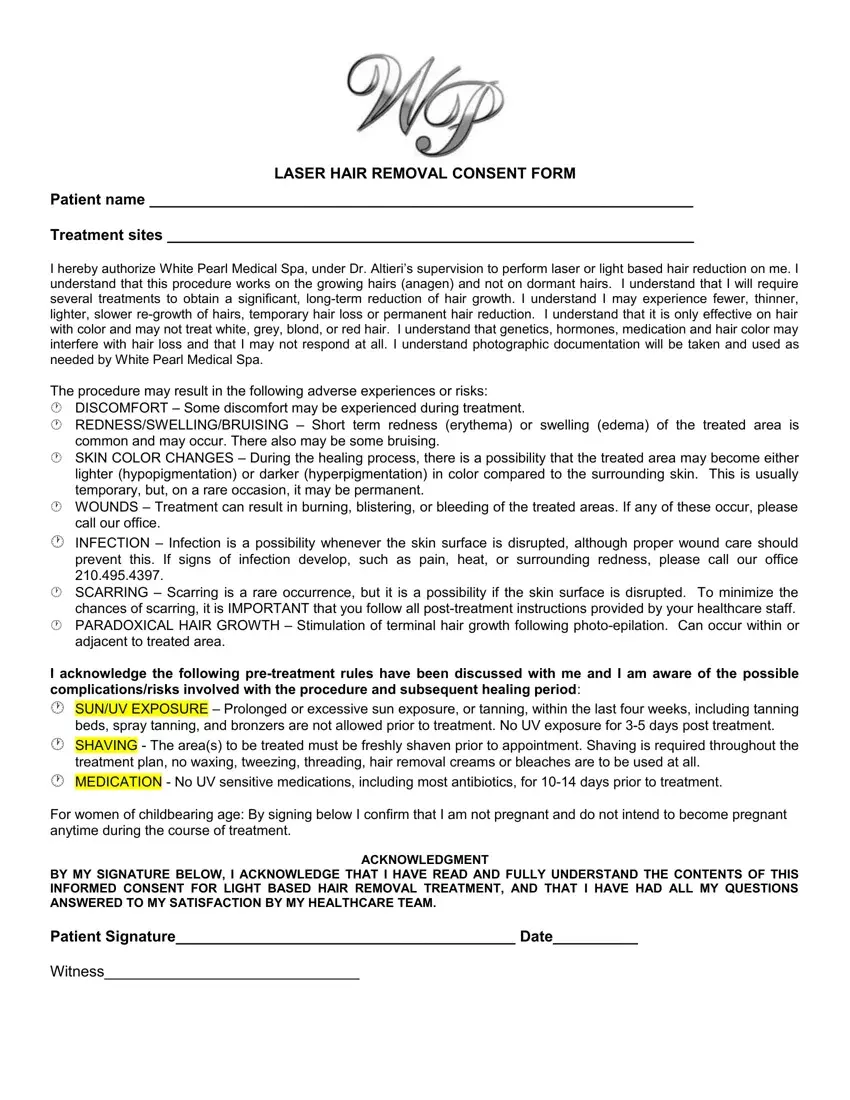Risk of Laser Procedure, continued
Accutane (Isotretinoin): This drug may impair the ability of skin to heal following treatments or surgery for a variable amount of time even after the patient has ceased taking it. Individuals who have taken this drug are advised to allow their skin adequate time to recovery from Accutane before undergoing laser treatment procedures.
Fire: Inflammable agents, surgical drapes and tubing, hair, and clothing may be ignited by laser energy.
Laser Smoke (plume): Laser smoke is noxious to those who come in contact with it. This smoke may represent a possible biohazard.
Infection: Although infection following laser skin procedures is unusual, bacterial, fungal, and viral infections can occur. Herpes simplex virus or zoster infections can occur following a laser treatment. Should an infection occur, additional treatment including antibiotics, hospitalization, or additional surgery may be necessary. If you have cold sores, herpes, or zoster, do please tell us prior to the laser treatment. Medications must be prescribed and taken both prior to and following the laser treatment procedure in order to suppress an infection from this virus.
Damaged Skin: Skin may heal abnormally or slowly following treatment by lasers or other surgical techniques. The occurrence of this is not predictable. Additional treatment may be necessary.
Skin Contour Irregularities: Contour irregularities and depressions may occur after surgery. Visible and palpable wrinkling of skin can occur. This may improve with time or can be surgically corrected.
Pain: You may experience some mild pain after the laser treatment. Chronic pain is very rare.
Unsatisfactory Result: Although good results are expected, there is no guarantee or warranty expressed or implied on the results that may be obtained. This would include risks such as unacceptable visible deformities, skin slough, loss of function, poor healing, wound disruption, permanent color changes in the skin, and loss of sensation. Additional procedures may be needed to attempt to improve your results.
Lack of Permanent Results: Laser hair removal is not permanent.
Visible Skin Patterns: Laser procedures may produce visible patterns within the skin. The occurrence of this is not predictable.
Distortion of Anatomic Features: Laser procedures can produce distortion of the appearance of the eyelids, mouth, and other visible anatomic landmarks. The occurrence of this is not predictable. Should this occur, additional treatment including surgery may be necessary.
Skin Discoloration/Swelling: Some swelling normally occurs following laser procedures. The skin in or near the surgical site can appear either lighter or darker than surrounding skin. Although uncommon, swelling and skin discoloration may persist for long periods and in rare situations may be permanent.





